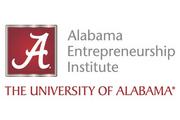
In August, our team at the Alabama Entrepreneurship Institute (AEI) celebrated the graduation of our summer Crimson Entrepreneurship Academy at The University of Alabama.
The program is a summer initiative for students who competed in our business plan and pitch competitions. The students receive a stipend and resources to work on their business ideas full time during the summer. They learn to move their business ideas forward, and we deliver content on key topics you expect to see in a pre-accelerator program. They also learn to do customer discovery, marketing analysis, protype work, financials and present a revised and improved business plan.
But there are two other things we work on that do not always fall under the traditional entrepreneurship curriculum; those are confidence and energy. Here, I’d like to discuss these because they are critical for entrepreneur and business success.
Measuring human energy
Energy is defined as the “ability to do work.” For over 20 years I have studied individual energy levels of employees in companies around the world, students in classes and those in entrepreneurship programs.
Every individual person has a rate of optimal energy that is unique to them. When I study energy, I ask people to respond to two questions.
- What is your current working energy (where you are today)?
- What is your optimal energy (where you are at your best or most productive)?
The work that our research teams have done shows these two data points can be used to predict individual outcomes such as unwanted turnover, sales, patient satisfaction, customer satisfaction and success in educational programs, including entrepreneurship training.
With this research and measurement work, we found that assessing human energy is unique in two ways. Variance over time and the gap between optimal and working energy predict outcomes.
The measures of energy that we use utilize a 0-10 scale, where zero is no energy, eight is very high energy, but 10 is a level of energy so extreme it is creating problems — situations where individuals are at risk of burnout. Optimizing energy at the highest level on the scale is not always the best or an ideal response.
You can compare the energy measurement process to taking your body pulse when exercising. If you are starting a new exercise regime, you are not told to go out push as hard as you can. You get a target heart rate based on age, health and more. Then you are told to exercise in the target zone to make sure you optimally burn calories. Another example is total quality management and control charts. The goal is not to turn a piece of machine up to the highest level and keep it running until it breaks. Instead, the focus is optimization — stay in the zone — with preventive maintenance.
Thus, analyzing energy has the same focus using trend vs. point-in-time data and learning how to stay in an optimal human energy zone customized for an individual. Training that goes along with energy management focuses on learning what a person’s ideal energy zone is and then managing energy in that zone. Being in your own personal zone results in optimized productivity, output and personal well-being.
Energy, confidence and entrepreneurial success
Energy is important. Helping entrepreneurs learn how to manage and optimize their energy is also critical but knowing how to target their energy on the right activities may be the most important way of learning about business, learning about themselves and have it all come together.
No matter how skilled you are, at that new entrepreneur stage when it is only you, it is important to realize you alone cannot do everything. Our job is help students get to their best energy and then focus, focus and focus on the right activities to move them to the next level.
When entrepreneurs can direct their energy on the right activities, they have small successes, and progress as well as success help build their confidence levels. Energy and confidence are related. When energy can be managed, students, employees and leaders become more confident.
Our goals for the summer program are to drive entrepreneurial success early in the business. To date, the program has a 77% success rate, with success measured as students are continuing their businesses by finishing product ideas, acquiring customers, funding and more. These same students often come back and help mentor new students. By doing this, they not only pass on what they know, but their shared knowledge helps continue the energy and confidence building cycle.
Expanding beyond entrepreneurship
Can optimizing energy and improving confidence help employees in more established firms? The short answer is yes. In fact, it may be even more important because as organizational complexity increases, the opportunities for being out of the energy zone also goes up.
In a number of corporate engagements, we uncovered something I call “stacking work syndrome.” Employees are becoming extremely de-energized by the continual addition of projects with no reorganization of priorities of their overall “stack” of to- do items. We watched employee energy plummet because they were in impossible situations. Employees want to do their best, and when they have too many projects, rather than focusing on one job and disappointing all the people who are involved in the other projects, they spent their time doing a little bit on all the projects in the stack. This leads to low success rates, low energy, and declining confidence.
Organizations have managed out of this situation by helping employees direct their energy on just a few projects and getting to completion. It is a similar process to what we see when working with new entrepreneurs.
To maximize employee confidence and resulting success, treat all employees like they are entrepreneurs in charge of their own work. Help them optimize their energy, improve confidence and get work done. This means using frequent priority moments to help recalibrate and focus energy so that employees have time to get a few wins, improving their energy, confidence and performance. This type of management style drives higher performance, key project completion and innovation.
Anyone interested in learning more about the energy-confidence-performance cycle can reach out to me at twelbourne@cba.ua.edu.
